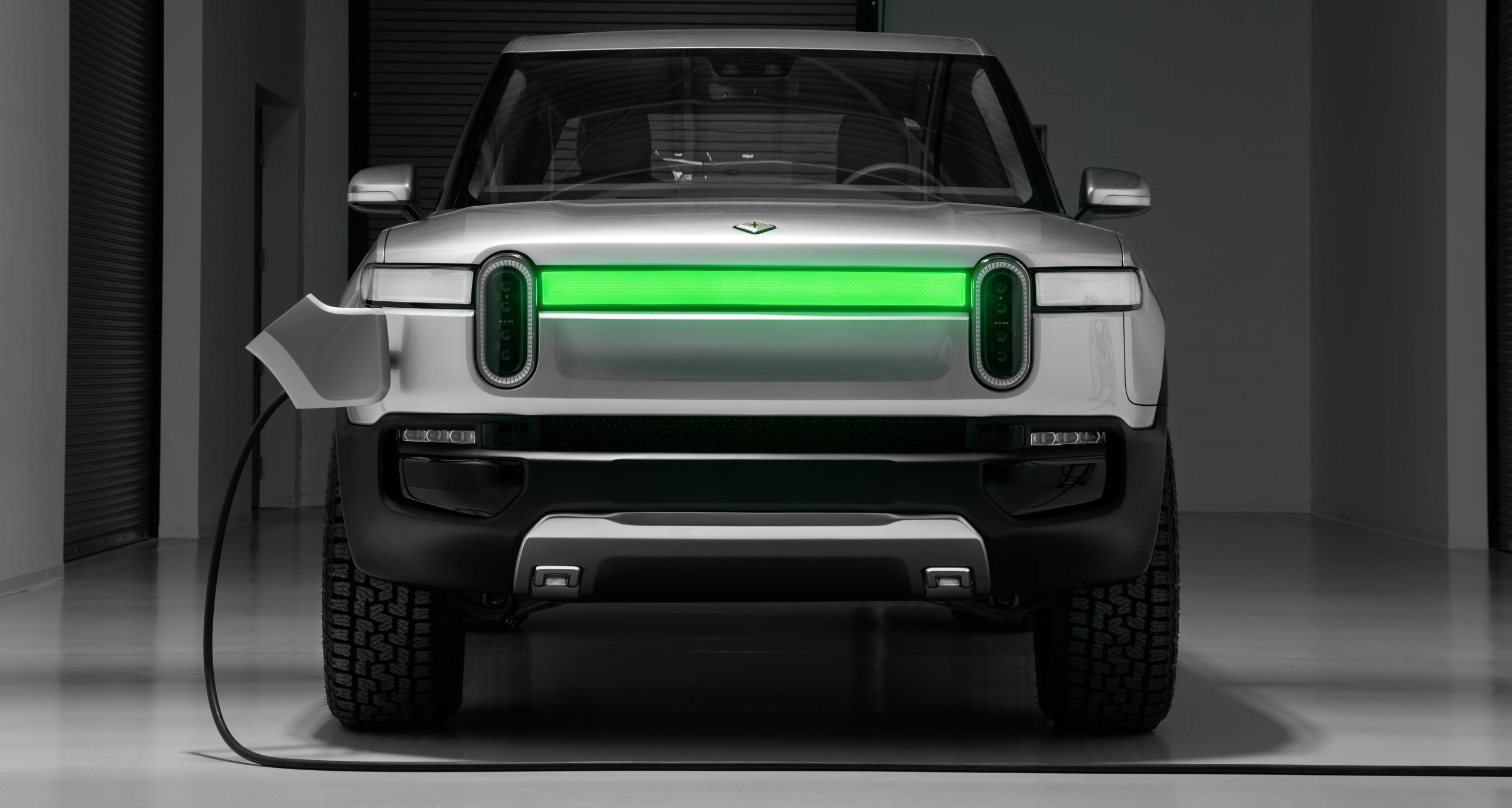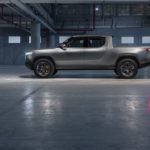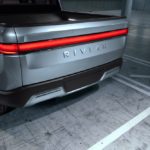

News
Rivian announces R1T pickup truck: $69k starting price, 400+ mile range, and 11k-lb towing capacity
US-based EV startup Rivian has come out of the shadows to announce the specs of its first vehicle — the R1T all-electric pickup truck. The R1T, which seats five passengers, is designed from the ground up to be as comfortable off the beaten path as it is on paved roads. Armed to the teeth with clever features and cutting-edge technology, Rivian’s first entry into the electric vehicle market has the potential to be a game-changer.
Rivian spent the better part of the past decade developing its first vehicles — the R1T pickup truck and the R1S SUV, which is set to be unveiled tomorrow at the LA Auto Show. Only the specs of the R1T have been unveiled so far, though in terms of performance, range, and features, the pickup truck is notably impressive. The R1T, for one, is equipped with four electric motors, each one having a power capacity of 147 kW, as well as 3,500 Nm of grounded torque per wheel.
Three battery pack variants will be offered for the vehicle — a 180 kWh battery that is expected to give 400+ miles of range per charge, a 135 kWh option that gives 300+ miles of range per charge, and a 105 kWh variant, which will give about 230+ miles of range per charge. Rivian plans to start manufacturing the R1T’s higher-end options first, followed by the entry-level version, which starts at $69,000 within 12 months from the start of production. Production for the R1T is expected to begin in 2020.
The Rivian R1T all-electric pickup truck. [Credit: Rivian]
Being a vehicle designed for the outdoors, the Rivian R1T has the capability to wade through up to 1 meter of water. The pickup, while comparable in size to trucks like the Ford Ranger and the Toyota Tacoma, also outguns its competition in terms of towing capacity. Thanks to its four electric motors, the R1T has a towing capacity of 11,000 pounds, a figure that is more comparable to America’s best-selling vehicle, the larger Ford F-150.
There’s also a lot of storage in the R1T, with a frunk that offers 11.7 cubic feet (330 liters) and a “gear tunnel” — a storage area that spans the width of the vehicle, — that provides an additional 12.4 cubic feet (350 liters) of space. Rivian notes that the gear tunnel would be perfect for storing items like skis, fishing rods, and golf bags. The all-electric pickup’s bed is also fitted with three 110-volt outlets with more than 400 watts available at each, as well as a compressed air source for filling in bike tires.
While the Rivian R1T is evidently designed to be a vehicle that is at home in rough terrain, the pickup truck still features some of the trademark features of premium electric vehicles. Just like Tesla’s electric cars, the R1T features impressive acceleration, with the entry-level truck hitting 60 mph in 4.9 seconds and the 180 kWh top-tier variant going from 0-60 in 3.2 seconds. Interestingly, the mid-level 135 kWh variant of the R1T is the quickest, with a 0-60 mph time of 3 seconds flat. All three versions of the vehicle have a top speed of 125 mph, similar to the Mid Range Model 3 RWD.
- (Photo: Rivian)
- The Rivian RT1’s spec sheet. [Credit: Rivian]
The Rivian R1T all-electric pickup truck. [Credit: Rivian]
The R1T’s futuristic approach to adventure could be seen in the design flourishes on its interior. The vehicle is equipped with a 15.6″ landscape-oriented center touchscreen, as well as a 12.3-inch display that takes the place of an instrument cluster. A 6.8-inch touchscreen is placed at the back of the center console, giving rear passengers infotainment and climate control access. The R1T’s steering wheel also features two thumb dials, just like the Model 3. Finally, the R1T is fitted with hardware that allows it to be fully self-driving in the future, thanks to a suite of cameras, lidar, radar, ultrasonic, and high-precision GPS technologies.
In a statement to The Verge, Rivian CEO and founder RJ Scaringe stated that the company is laser-focused on the adventure niche. The founder further explained that Rivian stayed largely in the shadows over the past years to ensure that its first vehicles are refined and competitive once they enter the market.
“They may have different form factors, they may be different sizes, but every single one of [our products] has to have this Patagonia-like feel of enabling adventure. We want to keep that very sharp. We want to focus only on the adventure space, so customers understand what we stand for.”
“We were quiet in stealth mode to avoid getting caught in this sort of hype cycle, and we said let’s make sure we have all the pieces lined up — the vehicle, the technology, the team, the supply chain, the manufacturing plant — before we actually talk about it. Because of that, some people have been questioning [us]. People need to see that this is very, very real,” Scaringe said.
Interested buyers could place a refundable deposit of $1,000 for the Rivian R1T here.

News
Tesla is not sparing any expense in ensuring the Cybercab is safe
Images shared by the longtime watcher showed 16 Cybercab prototypes parked near Giga Texas’ dedicated crash test facility.

The Tesla Cybercab could very well be the safest taxi on the road when it is released and deployed for public use. This was, at least, hinted at by the intensive safety tests that Tesla seems to be putting the autonomous two-seater through at its Giga Texas crash test facility.
Intensive crash tests
As per recent images from longtime Giga Texas watcher and drone operator Joe Tegtmeyer, Tesla seems to be very busy crash testing Cybercab units. Images shared by the longtime watcher showed 16 Cybercab prototypes parked near Giga Texas’ dedicated crash test facility just before the holidays.
Tegtmeyer’s aerial photos showed the prototypes clustered outside the factory’s testing building. Some uncovered Cybercabs showed notable damage and one even had its airbags engaged. With Cybercab production expected to start in about 130 days, it appears that Tesla is very busy ensuring that its autonomous two-seater ends up becoming the safest taxi on public roads.
Prioritizing safety
With no human driver controls, the Cybercab demands exceptional active and passive safety systems to protect occupants in any scenario. Considering Tesla’s reputation, it is then understandable that the company seems to be sparing no expense in ensuring that the Cybercab is as safe as possible.
Tesla’s focus on safety was recently highlighted when the Cybertruck achieved a Top Safety Pick+ rating from the Insurance Institute for Highway Safety (IIHS). This was a notable victory for the Cybertruck as critics have long claimed that the vehicle will be one of, if not the, most unsafe truck on the road due to its appearance. The vehicle’s Top Safety Pick+ rating, if any, simply proved that Tesla never neglects to make its cars as safe as possible, and that definitely includes the Cybercab.
Elon Musk
Tesla’s Elon Musk gives timeframe for FSD’s release in UAE
Provided that Musk’s timeframe proves accurate, FSD would be able to start saturating the Middle East, starting with the UAE, next year.

Tesla CEO Elon Musk stated on Monday that Full Self-Driving (Supervised) could launch in the United Arab Emirates (UAE) as soon as January 2026.
Provided that Musk’s timeframe proves accurate, FSD would be able to start saturating the Middle East, starting with the UAE, next year.
Musk’s estimate
In a post on X, UAE-based political analyst Ahmed Sharif Al Amiri asked Musk when FSD would arrive in the country, quoting an earlier post where the CEO encouraged users to try out FSD for themselves. Musk responded directly to the analyst’s inquiry.
“Hopefully, next month,” Musk wrote. The exchange attracted a lot of attention, with numerous X users sharing their excitement at the idea of FSD being brought to a new country. FSD (Supervised), after all, would likely allow hands-off highway driving, urban navigation, and parking under driver oversight in traffic-heavy cities such as Dubai and Abu Dhabi.
Musk’s comments about FSD’s arrival in the UAE were posted following his visit to the Middle Eastern country. Over the weekend, images were shared online of Musk meeting with UAE Defense Minister, Deputy Prime Minister, and Dubai Crown Prince HH Sheikh Hamdan bin Mohammed. Musk also posted a supportive message about the country, posting “UAE rocks!” on X.
FSD recognition
FSD has been getting quite a lot of support from foreign media outlets. FSD (Supervised) earned high marks from Germany’s largest car magazine, Auto Bild, during a test in Berlin’s challenging urban environment. The demonstration highlighted the system’s ability to handle dense traffic, construction sites, pedestrian crossings, and narrow streets with smooth, confident decision-making.
Journalist Robin Hornig was particularly struck by FSD’s superior perception and tireless attention, stating: “Tesla FSD Supervised sees more than I do. It doesn’t get distracted and never gets tired. I like to think I’m a good driver, but I can’t match this system’s all-around vision. It’s at its best when both work together: my experience and the Tesla’s constant attention.” Only one intervention was needed when the system misread a route, showcasing its maturity while relying on vision-only sensors and over-the-air learning.
News
Tesla quietly flexes FSD’s reliability amid Waymo blackout in San Francisco
“Tesla Robotaxis were unaffected by the SF power outage,” Musk wrote in his post.

Tesla highlighted its Full Self-Driving (Supervised) system’s robustness this week by sharing dashcam footage of a vehicle in FSD navigating pitch-black San Francisco streets during the city’s widespread power outage.
While Waymo’s robotaxis stalled and caused traffic jams, Tesla’s vision-only approach kept operating seamlessly without remote intervention. Elon Musk amplified the clip, highlighting the contrast between the two systems.
Tesla FSD handles total darkness
The @Tesla_AI account posted a video from a Model Y operating on FSD during San Francisco’s blackout. As could be seen in the video, streetlights, traffic signals, and surrounding illumination were completely out, but the vehicle drove confidently and cautiously, just like a proficient human driver.
Musk reposted the clip, adding context to reports of Waymo vehicles struggling in the same conditions. “Tesla Robotaxis were unaffected by the SF power outage,” Musk wrote in his post.
Musk and the Tesla AI team’s posts highlight the idea that FSD operates a lot like any experienced human driver. Since the system does not rely on a variety of sensors and a complicated symphony of factors, vehicles could technically navigate challenging circumstances as they emerge. This definitely seemed to be the case in San Francisco.
Waymo’s blackout struggles
Waymo faced scrutiny after multiple self-driving Jaguar I-PACE taxis stopped functioning during the blackout, blocking lanes, causing traffic jams, and requiring manual retrieval. Videos shared during the power outage showed fleets of Waymo vehicles just stopping in the middle of the road, seemingly confused about what to do when the lights go out.
In a comment, Waymo stated that its vehicles treat nonfunctional signals as four-way stops, but “the sheer scale of the outage led to instances where vehicles remained stationary longer than usual to confirm the state of the affected intersections. This contributed to traffic friction during the height of the congestion.”
A company spokesperson also shared some thoughts about the incidents. “Yesterday’s power outage was a widespread event that caused gridlock across San Francisco, with non-functioning traffic signals and transit disruptions. While the failure of the utility infrastructure was significant, we are committed to ensuring our technology adjusts to traffic flow during such events,” the Waymo spokesperson stated, adding that it is “focused on rapidly integrating the lessons learned from this event, and are committed to earning and maintaining the trust of the communities we serve every day.”





















